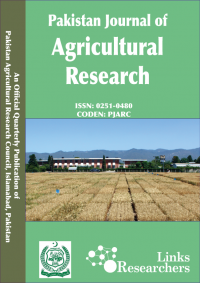ARSENIC III TOLERANCE POTENTIAL OF FUNGI ISOLATED FROM POLLUTED AND NON-POLLUTED SOILS OF PAKISTAN
Abdul Rehman Khan*, Muhammad Mahmood–Ul-Hassan**, Rizwan Ahmad** and Anjum Munir ***
ABSTRACT
Filamentous fungi can play significant role in bioremediation due to their large surface area and metal sorption capacity. In present study, arsenic (As) tolerance of indigenous filamentous fungi was explored. Fungal strains were isolated from peri-urban soils of Multan and Gujranwala irrigated with untreated industrial or municipal effluent. Some fungal strains were also isolated from non-polluted soils of Islamabad area. Arsenic (III) tolerance potential of 18 fungal isolates was tested by growing them on Potato Dextrose Agar (PDA) medium amended with different concentrations of As (50 to 5600 mg/L). The fungal tolerance was evaluated by comparing tolerance index (TI), minimum inhibitory concentrations (MIC) and growth rate. Out of 18 isolates, 12 belonged to genus , 3 to , 2 to and one to . The isolates and appeared to be most tolerant to arsenic. Fungal strains isolated from Gujranwala soil exhibited more As(III) tolerance than those from Multan and Islamabad. Maximum fungal growth was observed at temperature of 30 to 35 C and pH 6 to 7 under incubation period of 96-120 hrs. The isolated strains were capable of growing over a wide range of pH and temperatures and at high Arsenic concentrations. These findings show that the isolated strains are quite suitable for use in bioremediation under field conditions.
To share on other social networks, click on any share button. What are these?






